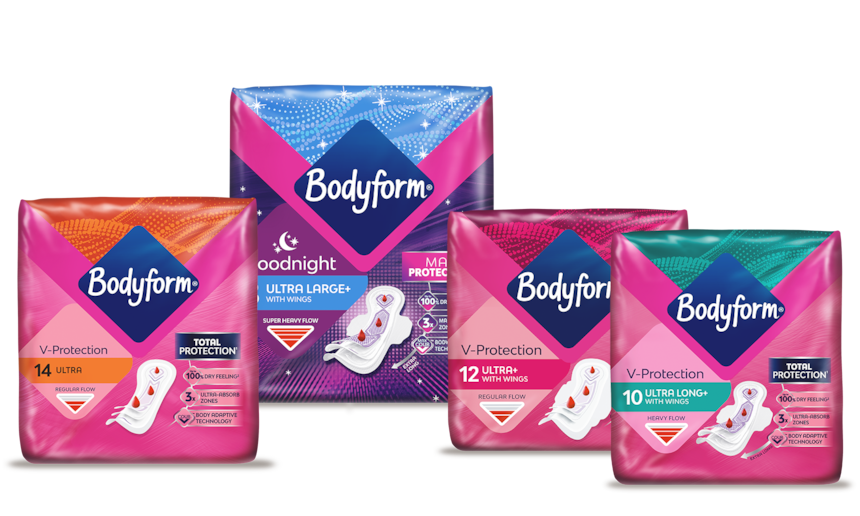What is PMS?

Feeling out of sorts before your period is pretty common. But we have the lowdown on PMS (sometimes known as premenstrual tension or PMT) – whether you’re looking for how long it lasts or how you can help ease premenstrual symptoms.
Knowing what it is and how to deal with it will make a big difference to how hormonal changes impact your life.
So what does PMS mean?
Well, PMS just means premenstrual syndrome – or it is sometimes also known as premenstrual tension (PMT). It is caused by the hormonal changes that take place during your menstrual cycle. PMS covers a whole range of symptoms and feelings that you may get. And they can be mild or, in some cases, pretty major. These include sore breasts, bloating and fatigue. Some women also get headaches, an upset stomach and trouble sleeping. Your emotions can be affected too, so you may feel more moody, sad, irritable or even tearful.
PMS can be frustrating, especially if you’re going through the symptoms all at once – it can make you want to scream and hide in your duvet until it’s all over, or you may only get symptoms every now and again. PMS is something that many women experience during their cycle, and at all different points in their life. Thankfully, the myths you may believe about PMS aren’t true! Let’s learn more all about PMS.
PMS MYTHS
MYTH 1: ALL WOMEN SUFFER FROM PMS EVERY MONTH
Not true. Some women only get it some months. Some get it really mildly. Some don’t get it at all. Everyone’s different.
MYTH 2: YOU CAN’T GET PREGNANT WHEN YOU’RE PREMENSTRUAL
You most certainly can conceive when you’re premenstrual. You actually can get pregnant at any point during your cycle.
MYTH 3: CHOCOLATE CAN HELP
You may crave chocolate when you’re premenstrual but it will actually cause larger fluctuations in your blood sugar levels, meaning bigger mood swings. You may want to avoid it (if you can!)
MYTH 4: THERE’S NOTHING YOU CAN DO ABOUT IT
Good news, there is! From taking evening primrose oil to ease mild symptoms to seeing your doctor in extreme cases, there’s no need to suffer.
DID YOU KNOW?
How can you ease premenstrual symptoms?
Sounds grim, doesn’t it? But fear not. There are many things that can ease your premenstrual symptoms and stop them getting in the way. They mostly involve a few simple lifestyle swaps that can make a big impact! Though some of them require a little bit of effort (like saying goodbye to your morning coffee caffeine fix), bear in mind that these are just ideas that you can pick and choose between to find what helps your symptoms.
One idea when figuring out what remedies work for you is to keep a diary of how you’re feeling in the run-up to your period. You could even write it on your phone notes for ease. Spotting your recurring symptoms and nailing their patterns means being prepared and getting support.
Though PMS might only hit at specific parts of your cycle, there are some things that you can do throughout your cycle to give yourself the best chance at putting a pause on your premenstrual symptoms. Regular exercise and healthy meals will make a big difference, especially if you include wholegrain carbohydrates like wholemeal bread and porridge. Some experts recommend reducing salt and caffeine in your diet. If all else fails, over-the-counter painkillers will take care of your aches and pains, so have some at hand when you know your period is coming up. Let’s learn some more things you can do to help fight your PMS symptoms...
HOW TO DEAL WITH PMS

This is a great way to tackle PMS-related mood swings. Massages, tai chi and meditation are really helpful too, as they help you relax and feel less stressed.

If you smoke, try your best to stop. Apart from the health risks, studies show that women who smoke are more than twice as likely to develop moderate or severe PMS symptoms.

Aerobic exercise such as brisk walking or swimming has been found to help ease the anxiety, depression and blue moods that come with PMS.

You can be less vulnerable to your emotions by eating more of the good stuff like whole grains, fruit and vegetables – and less of the bad like sugar, fat and salt.

You may crave caffeine when you’re premenstrual, but you’re better off cutting right down on coffee, tea and chocolate, as these can make your symptoms worse.
DID YOU KNOW?
PMS can be a bore to deal with, but the above tips can help you to reduce your symptoms and continue to live fearlessly, even when PMS strikes. And if your symptoms are making normal life too difficult, see your doctor who will be able to work out if your PMS symptoms are connected to something else like PCOS, and help you to manage them.
If you’d like to continue learning more, you can read about a severe form of PMS, called PMDD (Premenstrual Dysphoric Disorder) or let’s find out about and debunk some other period myths.
Medical disclaimer
The medical information in this article is provided as an information resource only, and is not to be used or relied on for any diagnostic or treatment purposes. Please consult your doctor for guidance about a specific medical condition.
[References]
[1 & 2] Information taken from a US study carried out by researchers from the University of California. Study entitled: The Association of Inflammation with Premenstrual Symptoms.
[1] https://theperiodvitamin.com/pms-mood-swings.html
[2] http://www.womenshealth.gov/publications/our-publications/fact-sheet/premenstrual-syndrome.html
[3] http://www.everydayhealth.com/pms-photos/10-healthy-ways-to-manage-pms.aspx#02
Continue learning



